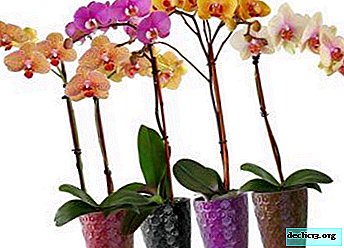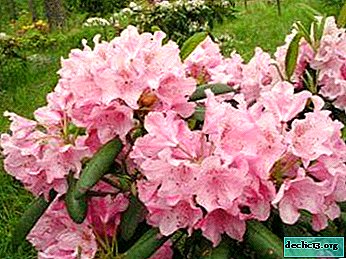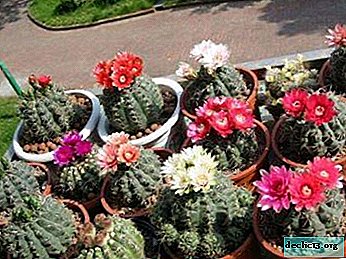How often do I need to water orchids at home? How many times a week do you need to moisten a flower?

Orchids are very demanding on the degree of soil moisture. Before flowering and during it, the orchid requires quite intensive watering.
At this time, it is important to prevent root decay. The health and appearance of the plant directly depend on the competent organization of orchid watering.
When caring for an orchid, it is important to know how to properly water the flower, as well as familiar with the consequences of insufficient and excessive soil moisture.
What does it depend on?
The frequency of watering orchids is determined by various factors:
- season;
- plant life cycle;
- temperature and humidity level;
- lighting;
- soil features;
- growing method.
Orchids located in the hanging system require frequent spraying 1-3 times a day. Plants planted on the block are irrigated more often than specimens living in pots.
In addition, the rate of absorption and absorption of moisture in different varieties is not the same. Moist soil like:
 phalaenopsis;
phalaenopsis;- cymbidium;
- papiopedilum;
- miltonia.
Prefer to remain without watering until the substrate is completely dry:
- Cattleya;
- oncidium;
- dendrobium;
- odontoglossum.
How to determine the presence of moisture in the soil?
The need for watering is determined by the following criteria:
- If there are droplets of condensate on the walls of the flowerpot, it is too early to water the plant. Dry walls indicate the need for soil moisture.
- The bright green color of the roots indicates that there is enough moisture. Light roots - a signal for watering.
- If you feel heavy when lifting the pot, watering is not required. If the pot is light, it's time to water it.
- In an opaque flowerpot, the presence of moisture in the soil is determined by the degree of immersion in it of a wooden stick.
How many times do you need to moisturize at home?
There is no exact moisture schedule. For most types of indoor orchids, it is optimal to water 1-3 times a week in the summer and 1-2 times a week in the winter (how to water orchids in winter and autumn?). In the heat, the substrate dries faster, so it is necessary to moisten it in the summer more often. Immersion and watering methods are suitable (we talked about how to water an orchid here). Watering orchids in pots at home should be carried out in the morning, so that by evening in the axils of the leaves there is no moisture left.
You will find more detailed information on how to water indoor orchids in our article, but it says what water and solutions can do this.
Street irrigation
Garden orchid loves rain, it can be irrigated in the morning and evening. Watering is necessary regularly, preventing the soil from drying out. However, waterlogging should not be allowed. Garden orchid prefers to be in moderately moist soil. For this, good drainage must also be provided.
On a note. For an orchid growing on the street, it is better to organize a drip wetting system.Consider the frequency of watering orchids when the plant blooms and during dormancy:
Flowering plants
 Before and during flowering, the orchid needs more intensive watering than usual. Watering the plant during flowering should be as the soil dries several times a week. Watering is usually required every 3-4 days.
Before and during flowering, the orchid needs more intensive watering than usual. Watering the plant during flowering should be as the soil dries several times a week. Watering is usually required every 3-4 days.
If the orchid blooms, do not wait for the complete evaporation of condensate on the walls of the container. For a flowering plant, complete drying of the substrate is not needed. This can adversely affect flowering. It is only necessary to water the roots, trying to optimally saturate them with moisture, but not to overfill.
If there is insufficient humidity in the room, it is allowed to spray the leaves with warm water, the temperature of which should not be higher than + 36 ° C. In doing so, try to avoid moisture entering the core of the flower.
A blooming orchid can be lowered into a container of water until the substrate is completely saturated. Or water with a watering can, directing water to the walls of the pot.
Attention! When the flowers fade and the stained area at the ends of the rhizomes decreases, the irrigation frequency is halved and the substrate is dried between the procedures.During rest
After the plant fades, watering should be reduced by about a month. In nature, after flowering, orchids begin to form seeds, which must fly apart in several directions for several kilometers. This is only possible in dry periods. It is necessary to provide the plant with conditions as close to natural as possible.
If the orchid does not bloom, you need to wait until the substrate and roots have completely dried. This is especially important when the apartment is cool. The amount of watering should be temporarily reduced and alternated with drying, but the soil and roots should not be allowed to dry out very much. Watering an orchid during dormancy is necessary no more than twice a month.
It is necessary to allow excess fluid to flow out of the pot so that after placing it on a cool windowsill, the roots do not get too cold and do not get sick. If the flower relies on a warm shower, it should be done in the evening, and at night leave the plant in the bathroom so that rot does not form at the growth point.
To restore the orchid after flowering, special liquid fertilizers can be added to the water. They contribute to the development of new leaves and root system.
What happens if you do this too often?
 The plant is difficult to tolerate excess moisture. If you water it, without waiting for the substrate to dry, it will condense and water stagnation will occur. The root system can rot. Having lost the ability to fully eat, the plant weakens and is able to die.
The plant is difficult to tolerate excess moisture. If you water it, without waiting for the substrate to dry, it will condense and water stagnation will occur. The root system can rot. Having lost the ability to fully eat, the plant weakens and is able to die.
In this situation, urgent measures are required to save the orchid. It follows:
- transplant a plant;
- cut rotten roots;
- treat slices with activated carbon powder.
Here is how to water the orchid after transplanting into another pot.
When is not enough moisture?
Orchids tolerate short periods of drought quite easily. These plants accumulate a sufficient amount of moisture in the roots and leaves. However, rare watering can provoke drying of the root system. If there is not enough water, the orchid stops growing and does not bloom.
On a flowering plant experiencing an acute moisture deficit, flowers and unblown buds prematurely dry.
Proper watering is an important part of caring for indoor and garden orchids. How and how many times a week you need to water a flower is determined by the time of year, life cycle, conditions of detention and variety. Improper soil moisture can cause growth problems and even plant death. If you water the orchid, taking into account all factors, it will develop safely and bloom magnificently.
Useful video
In this video we will look at how to water orchids correctly:

 phalaenopsis;
phalaenopsis;















